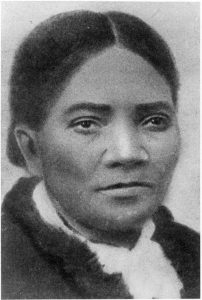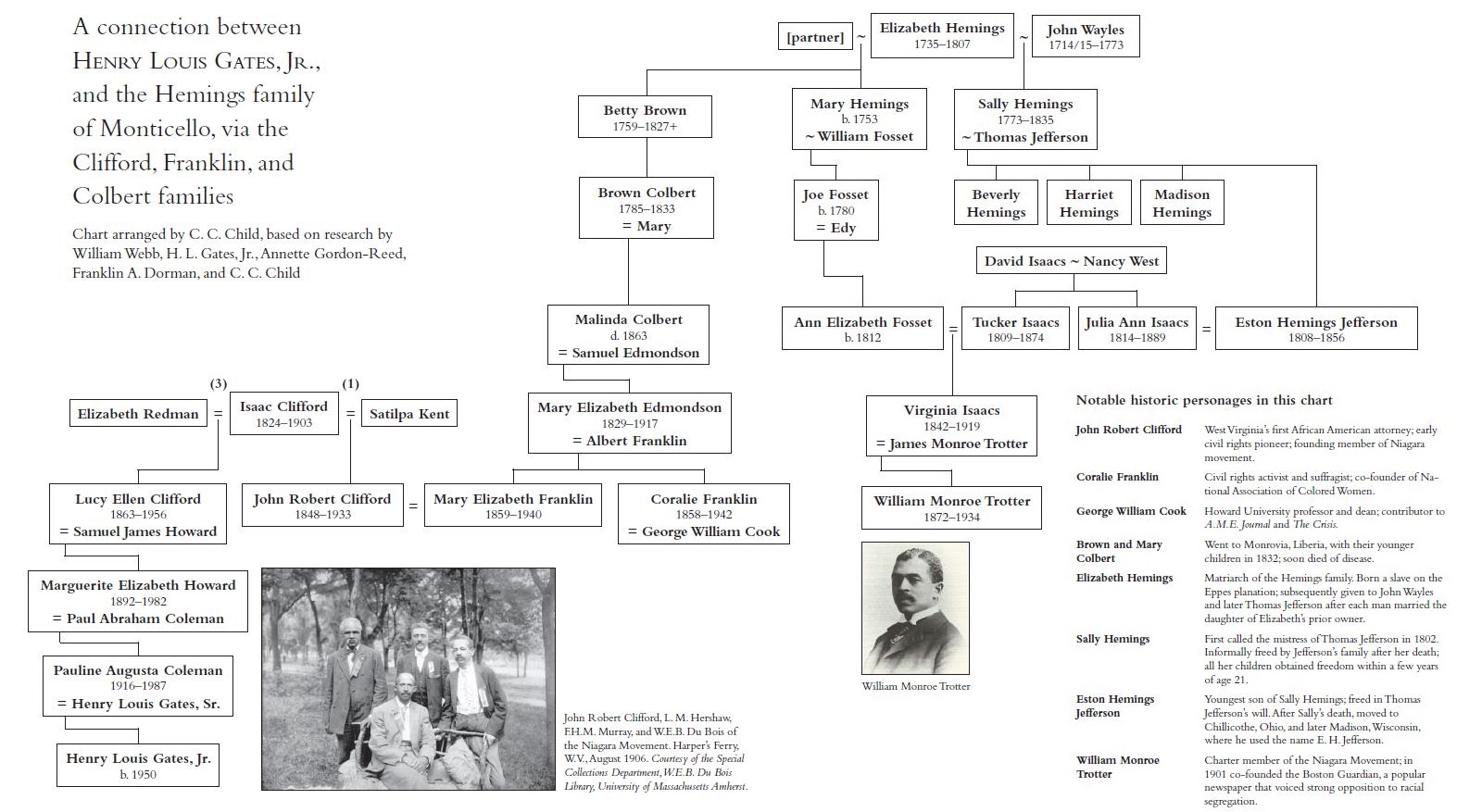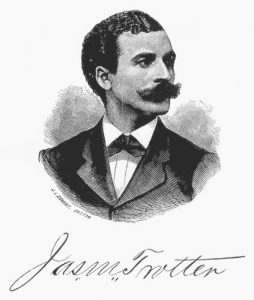
The documentary “Birth of a Movement” – which premiered on 30 January at the Somerville Theatre outside Boston, and airs nationally on PBS on Monday 6 February during African-American History Month – explores D.W. Griffith’s The Birth of a Nation (1915) through a modern lens. What caught my attention about the film is the documentary’s protagonist, famed civil rights activist William Monroe Trotter (1872–1934). Trotter lived nearly his entire life in Boston and founded the Boston Guardian, an independent African-American newspaper. He also established the Niagara Movement, in 1915, with fellow Massachusetts native W.E.B. DuBois, and participated in numerous other causes for civil rights until his death in 1934.
Trotter’s family have been featured in several NEHGS and other genealogical and historical publications. He was the son of James Monroe and Virginia (Isaacs) Trotter. The Trotter family is treated in our 1998 publication Twenty Families of Color in Massachusetts 1742–1998 by Franklin A. Dorman. While W.M. Trotter had no children, his sister Bessie had two daughters, and the book treats the Trotter family for six generations to descendants born at the time of publication.[1]
The genealogical connections behind Trotter’s mother are of considerable note. Born in Cincinnati, Virginia (Isaacs) Trotter (1842–1919) was the daughter of Charlottesville, Virginia natives Tucker and Ann Elizabeth (Fossett) Isaacs. Tucker’s parents were David Isaacs and Nancy West. David Isaacs (1760–1837) was a Jewish German immigrant who lived in a common-law marriage with Nancy West, a free woman of color.[2]
Tucker Isaacs’s sister was Julia Ann Isaacs (1814–1889), who married Eston Hemings (1808–1856), the son of Sally Hemings and President Thomas Jefferson, born at Jefferson’s plantation of Monticello in Albemarle County, Virginia. Eston was freed in the will of Thomas Jefferson along with his brother Madison Hemings. The Isaacs and Hemings families all left Charlottesville in the 1830s and ’40s and settled in Ross County, Ohio, in a community of free African-Americans. Eston, Julia, and their three children later left Ohio for Madison, Wisconsin, where Eston Hemings assumed the name “E.H. Jefferson,” and the family was identified as white in the records afterward, while many members of the Madison Hemings and Tucker Isaacs families remained in Ohio.[3]

Tucker Isaacs’s wife (and Virginia’s mother), Ann Elizabeth Fossett, was also connected to the Hemings family. Ann was born at Monticello in 1812, the daughter of slaves Joe Fossett and Edy. Joe was the son of a white Monticello worker named William Fossett and of Mary Hemings, the older half-sister of Sally Hemings, both of them daughters of Elizabeth Hemings.
While Sally Hemings and her children were the only “full” family freed (both formally and informally) by Jefferson, his will also freed Sally’s younger brother John Hemings and two of her nephews, Burwell Colbert and the above Joe Fossett. However, the will did not free any wives or children of these three men if they were Monticello slaves. As such, Joe Fossett’s wife and eight children were put up for auction in 1827 to settle Jefferson’s vast debts. Fossett, with the help of family members, was able to purchase his wife and most, but not all, of their children.
His son-in-law Tucker Isaacs helped purchase his own wife Ann Elizabeth Fossett, and they joined her parents in Ohio, but soon returned to Charlottesville to remain with other family members. Tucker was later arrested for allegedly forging free papers for his still enslaved brother-in-law Peter Fossett. After the charges were dropped, Tucker sold his land in Virginia and purchased a farm in Ohio which operated as a station on the Underground Railroad.[4]

In 2010, the speaker at our annual dinner was Annette Gordon-Reed, whose books Thomas Jefferson and Sally Hemings: An American Controversy and The Hemingses of Monticello are some of my favorite works on the Hemings family. Our guest of honor was our board member Henry Louis Gates, Jr., and I assisted in preparing a volume on his genealogy. I was excited to learn in the course of this research that Gates himself had a “kin of kin” connection to the Hemings family. I was able to put together the above chart, showing not only his connection to the Hemings family, but to the lesser known civil rights activist William Monroe Trotter of Boston, now being recognized again in this new documentary.
Notes
[1] Franklin A. Dorman, Twenty Families of Color in Massachusetts 1742-1998 (Boston: NEHGS, 1998), 443–56, which cites further treatment of W.M. Trotter and his father from Rayford W. Logan and Michael R. Winston, eds., Dictionary of American Negro Biography (New York: W.W. Norton, 1982), 602–5.
[2] Joshua D. Rothman, Notorious in the Neighborhood: Sex and Families across the Color Line in Virginia 1787-1861 (Chapel Hill, N.C.: University of North Carolina Press, 2003), which discusses the West and Isaacs families in considerable detail. Nancy West herself was the daughter of Thomas West, a white blacksmith, and of Priscilla, who at one point belonged to Thomas. The heirs named in Thomas West’s 1796 will were Nancy and her (full) brother James Henry West, who was left his father’s land, livestock, and furniture, including his eight slaves.
[3] In addition to the works by Gordon-Reed, also see Jane Lewis and Peter Onuf, Sally Hemings and Thomas Jefferson (Charlottesville, Va.: University Press of Virginia, 1999), and (among other articles) Helen F.M. Leary, “Sally Hemings’s Children: A Genealogical Analysis of the Evidence,” in Jefferson-Hemings, A Special Issue of the National Genealogical Society Quarterly 89 [2001], for additional historical, genetic, and genealogical discussion of Hemings and Jefferson.
[4] https://www.monticello.org/getting-word/people/tucker-isaacs (and interconnected links to other family members); also see the works by Gordon-Reed.

I have followed the research of Sally Hemings and her children with Thomas Jefferson for a long time including the books of Annette Gordon-Reed. This article helps me put it all together, especially with the chart of the families going back to Elizabeth Hemings. Many, many thanks.
Well done Chris, well done!
Very interesting. This makes me more eager to continue researching my daughter’s African American side of the family! I will be sure to watch the PBS showing of “Birth of a Movement.” Thank you!
Excellent summary about William Monroe Trotter. The PBS documentary was
extremely well done. More Americans should become informed about
the early days of the civil rights movement.